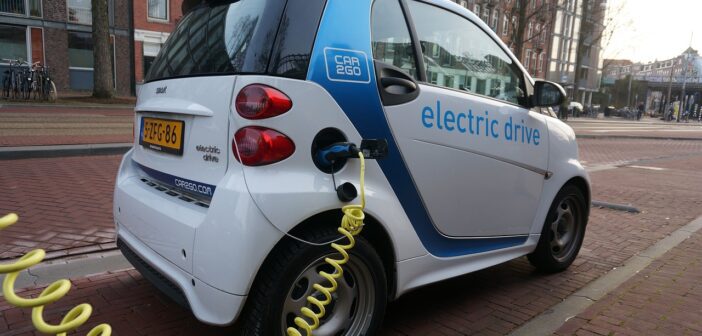credit:https://pixabay.com/
The electric vehicle (EV) industry in the United States has been a cornerstone of the nation’s transition to sustainable energy. However, recent policy shifts, including the removal of EV-favoring subsidies and incentives, present new challenges for this burgeoning sector. Despite these obstacles, the future of EVs in the U.S. is far from bleak. This article delves into the evolving landscape, exploring the implications of policy rollbacks and how market forces and innovation could shape the industry’s trajectory.
1. Policy Rollbacks: The Immediate Impacts on the EV Market
The elimination of federal subsidies for electric vehicle (EV) buyers could have a profound impact on the adoption rate of EVs, as these subsidies have historically been instrumental in bridging the cost gap between electric and internal combustion engine (ICE) vehicles. By reducing the upfront price of EVs, often by as much as $7,500, these incentives have made EVs more accessible to a wider consumer base, thus driving demand and accelerating the transition to cleaner transportation. A 2022 report by the International Council on Clean Transportation highlighted that such subsidies were responsible for a 40% increase in EV sales over the past decade. Without these financial incentives, prospective buyers may become more hesitant, perceiving EVs as unaffordable, and this reluctance could slow the nation’s momentum toward achieving a sustainable, electrified future. This shift could also undermine the broader goals of reducing greenhouse gas emissions, further complicating the transition to renewable energy sources.
Reference: International Council on Clean Transportation (2022).
2. The Role of State-Level Policies and Incentives
While federal subsidies for electric vehicles (EVs) may be diminishing, many states, particularly California and New York, are stepping up their efforts to push for cleaner transportation. California’s Advanced Clean Cars Program, for example, mandates that by 2035, all new passenger vehicles sold in the state must be zero-emission, reinforcing its leadership in sustainability. Additionally, these states offer a variety of incentives such as rebates, tax breaks, and significant investments in EV charging infrastructure to further incentivize adoption. This proactive state-level approach helps ensure that the transition to electric vehicles continues even if federal policies shift, keeping momentum strong in critical markets where the demand for EVs is high. Such programs could drive innovation and maintain growth in the EV sector, counteracting potential federal slowdowns and ensuring that the clean energy revolution persists.
Reference: California Air Resources Board (2023).
3. Consumer Behavior and Market Trends
The removal of subsidies for electric vehicles (EVs) could encourage a shift in consumer priorities, urging them to focus more on long-term savings rather than the initial price tag. As the true cost advantages of EVs become more apparent—such as lower fuel and maintenance costs compared to internal combustion engine (ICE) vehicles—consumers are likely to weigh the total cost of ownership (TCO) more heavily in their purchasing decisions. This shift in focus is further amplified by the expanding range of EV models available at various price points, ensuring there are options for diverse budgets. Budget-conscious buyers can now consider affordable models like the Nissan Leaf or Chevrolet Bolt, while high-end consumers continue to find compelling luxury options. As the market matures and awareness increases, EVs may become the more economical choice for a wider segment of consumers, reinforcing their appeal across economic strata and making the transition away from ICE vehicles more attainable for all.
Reference: Consumer Reports (2023).
4. Automaker Strategies in a Post-Subsidy Era
Automakers, responding to evolving policy changes, are increasingly prioritizing cost reduction and technological innovation as strategies to stay competitive in the electric vehicle (EV) market. For instance, Tesla’s Gigafactories focus on scaling battery production, significantly lowering costs while enhancing energy density, which is crucial for extending range and improving vehicle performance. Similarly, major players like Ford and General Motors are investing in next-generation battery technology to streamline manufacturing and meet future demand. Beyond just hardware, partnerships between automakers and tech firms are pushing the envelope on autonomous driving and connectivity, positioning EVs as smarter, more integrated vehicles. These synergies are key to offsetting the reduction of government subsidies, creating a future where the appeal of EVs lies not only in their environmental benefits but also in their technological edge, making them a smarter investment for consumers.
Reference: Tesla Investor Relations (2023).
5. Private Sector Investments in Charging Infrastructure
The growing availability of EV charging infrastructure plays a pivotal role in accelerating the adoption of electric vehicles. As federal support for infrastructure development starts to taper, private sector players are stepping in to fill the gap, with companies like ChargePoint, EVgo, and Electrify America aggressively expanding their networks. These companies are not only increasing the number of charging stations but also focusing on fast-charging solutions to reduce wait times and enhance convenience for drivers. Additionally, energy companies are tapping into the EV market by integrating sustainable energy sources such as solar and wind power at charging locations, creating a cleaner and more resilient charging ecosystem. This shift towards renewable-powered stations can alleviate range anxiety, offering a more dependable, eco-friendly experience that encourages consumers to embrace electric vehicles with greater confidence, helping to accelerate the global transition to greener transportation.
Reference: BloombergNEF (2023).
6. Global Competitiveness and the U.S. EV Industry
The U.S. faces significant challenges in the global electric vehicle (EV) race, as countries like China and the European Union aggressively push for EV adoption with strong policies, including generous subsidies, stringent emission regulations, and massive investments in green technologies. China’s focus on affordable EVs has catapulted it to the top of the global market, while the EU’s Fit for 55 package aims to reduce carbon emissions by phasing out internal combustion engine (ICE) vehicles, setting ambitious targets that make it a formidable competitor. To maintain its leadership, the U.S. must evolve its approach by fostering innovation through public-private partnerships, increasing investments in EV R&D, and offering robust incentives for domestic manufacturers to remain competitive. These strategies would not only ensure a sustainable future for U.S. automakers but also preserve jobs, bolster local economies, and position the nation as a leader in the growing global green tech economy.
Reference: International Energy Agency (2023).
Conclusion: A Resilient Future for EVs in the U.S.
While the removal of EV-friendly policies poses challenges, the U.S. EV industry has multiple pathways to resilience. State-level initiatives, private investments, consumer awareness, and automaker innovations collectively signal a robust future. To ensure continued progress, stakeholders must collaborate to address gaps left by federal rollbacks and foster a market-driven transition to sustainable transportation. The road ahead may be complex, but the U.S. EV sector remains poised to adapt and thrive in a changing landscape.


